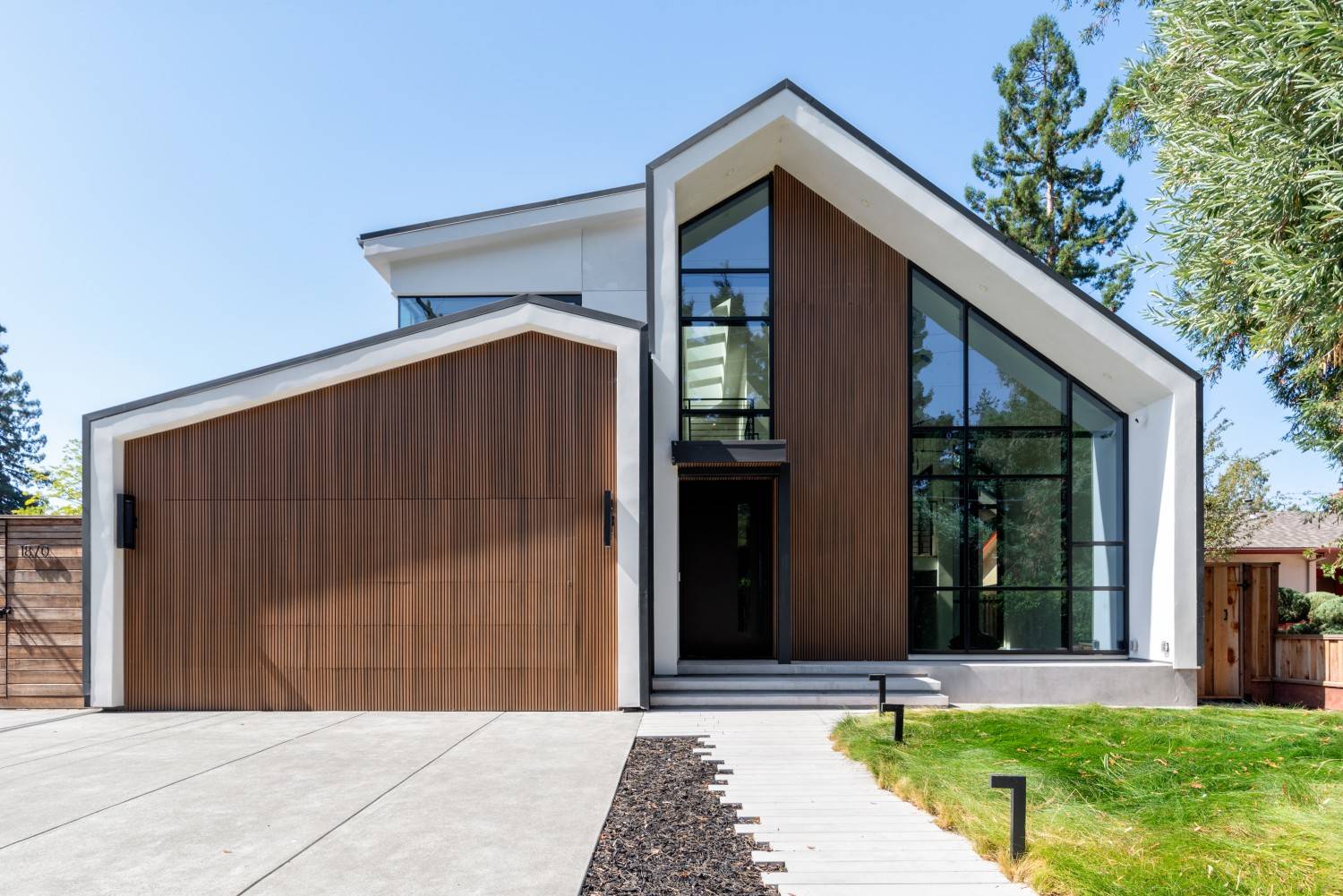Bay Area Electrification & Net-Zero Home Upgrades: Cost, Incentives & ROI

Here’s what’s happening right now across the Bay Area that’s changing everything about home renovations.
Berkeley just banned natural gas in all new construction. San Jose followed with similar restrictions. And now dozens of cities across the region are implementing electrification mandates.
Last month, I had three different homeowners call me in panic because they heard their gas water heater would be “illegal” soon.
But here’s what nobody’s talking about – the homeowners who are getting ahead of these mandates are seeing incredible returns through rebates, incentives, and energy savings that didn’t exist even two years ago.
I just finished a complete electrification project in Palo Alto where the homeowner received $28,000 in rebates and cut their energy costs by 65%.
After 15 years in Bay Area construction, I’ve never seen government incentives this generous or electrification technology this cost-effective.
Let me break down exactly what electrification means for your home, your wallet, and your property value in 2025.
What is Home Electrification and Why It Matters
Home electrification means replacing every gas-powered system in your house with electric alternatives powered by clean energy.
The core technologies that make electrification work are simpler than most people think:
Heat pumps replace your gas furnace and water heater. Modern heat pumps are 3-4 times more efficient than gas systems and work perfectly in Bay Area climates. They heat and cool your home using the same technology that’s in your refrigerator.
Induction cooking replaces gas stoves and ranges. Professional chefs are switching to induction because it’s faster, more precise, and safer than gas. Water boils in half the time, and temperature control is instant.
Solar panels plus battery storage power everything. A properly sized solar system with battery backup can make your home energy-independent while feeding excess power back to the grid for credits.
Why the push toward electrification now?
Climate mandates are driving policy changes across California. The state aims for carbon neutrality by 2045, and residential gas use represents 10% of statewide emissions.
But there’s a practical reason too – electricity is getting cheaper while natural gas prices are volatile and trending upward.
In the Bay Area, peak summer gas prices can cost 40% more than electric heating with solar panels.
“Electrification isn’t just about environmental impact – it’s about energy independence and long-term cost savings that start paying dividends immediately.” – Maor Greenberg
2025 Incentives and Rebates Available Now
The rebate programs available right now are the most generous I’ve seen in 15 years of construction.
Here’s what’s available for Bay Area homeowners in 2025:
Federal Tax Credits (30% of project costs)
- Solar panels: 30% federal tax credit through 2032
- Battery storage: 30% credit when paired with solar
- Heat pump systems: Up to $2,000 credit for qualifying systems
- Electrical panel upgrades: 30% credit up to $600
California State Rebates
- TECH Clean California: $3,000-$7,000 for heat pump water heaters
- HVAC rebates: $3,000-$6,500 for heat pump space heating
- Induction stove rebates: $840 for qualifying appliances
- Electrical panel upgrades: Up to $4,000 for 200-amp service
BayREN Regional Programs
- Whole-home electrification: Additional $4,000-$8,000 for comprehensive projects
- Low-income households: Up to $14,000 in additional incentives
- Energy efficiency upgrades: Rebates for insulation, windows, and weatherization
Utility Company Incentives
- PG&E: $500-$2,500 for heat pumps, plus time-of-use rate discounts
- SMUD: $3,500 for all-electric home conversions
- Municipal utilities: Vary by city, often include expedited permitting
I recently helped a San Jose homeowner stack these incentives for a total of $31,000 in rebates and credits on a $65,000 electrification project.
The key is applying for rebates in the right order and understanding which programs can be combined.
Most homeowners leave $5,000-$10,000 on the table because they don’t know about smaller municipal and utility programs.
Cost Analysis & Payback Timelines
Here’s the real cost breakdown that shows why electrification makes financial sense right now.
Typical electrification costs for a 2,000 sq ft Bay Area home:
| System Upgrade | Installation Cost | Available Rebates | Net Cost | Annual Savings |
|---|---|---|---|---|
| Heat pump HVAC | $18,000-$25,000 | $6,500-$9,500 | $11,500-$15,500 | $800-$1,200 |
| Heat pump water heater | $4,500-$6,500 | $3,000-$4,000 | $1,500-$2,500 | $400-$600 |
| Induction stove/range | $1,200-$3,000 | $840 | $360-$2,160 | $150-$300 |
| Electrical panel upgrade | $3,000-$5,000 | $600-$4,000 | $2,400-$1,000 | $0-$200 |
| Solar + battery (6kW) | $25,000-$35,000 | $7,500-$10,500 | $17,500-$24,500 | $1,800-$2,400 |
Total Project Investment: $51,700-$74,500 before rebates
After All Incentives: $33,260-$45,660
Annual Energy Savings: $3,150-$4,700
Payback Timeline: 7-12 years through energy savings alone, but most homeowners see additional value through:
- Increased home value ($15,000-$30,000 typical)
- Improved indoor air quality and comfort
- Energy independence during power outages
- Protection against rising gas prices
Gas vs. Electric Lifetime Cost Comparison
Over 15 years, here’s how the numbers work out:
| Energy Source | Equipment Costs | Energy Costs (15 years) | Maintenance | Total Cost |
|---|---|---|---|---|
| Gas systems | $35,000 | $42,000 | $8,000 | $85,000 |
| Electric + solar | $45,000 | $18,000 | $3,000 | $66,000 |
The lifetime savings of electrification: $19,000 over 15 years, plus you own a more valuable, future-proof home.
Case Study: Complete Net-Zero Transformation in Palo Alto
Let me walk you through a recent project that shows exactly what’s possible with comprehensive electrification.
The Palo Alto Net-Zero Remodel
Project Overview: 2,800 sq ft single-family home built in 1965. The homeowners wanted to eliminate gas completely and achieve net-zero energy consumption.
Existing Systems:
- Gas furnace (25 years old, inefficient)
- Gas water heater (10 years old)
- Gas stove and oven
- No solar panels
- 100-amp electrical service
- Single-pane windows throughout
Electrification Upgrades Installed:
- Heat pump HVAC system: Mitsubishi ducted system with zoning ($22,000)
- Heat pump water heater: 80-gallon Rheem hybrid unit ($5,200)
- Induction cooking: 36-inch KitchenAid range ($2,400)
- Electrical service upgrade: 200-amp panel with smart sub-panels ($4,800)
- Solar array: 8.5kW system with optimizers ($28,000)
- Battery storage: Tesla Powerwall 2 units ($24,000)
- Energy efficiency: Insulation, windows, weatherization ($18,000)
Total Project Cost: $104,400
Incentives and Rebates Received:
- Federal solar tax credit (30%): $15,600
- California TECH rebates: $7,000
- BayREN whole-home electrification: $6,000
- City of Palo Alto rebates: $3,200
- PG&E efficiency incentives: $2,400
Total Rebates: $34,200
Net Project Cost: $70,200
Results After 12 Months:
- Energy bills: Reduced from $320/month to $45/month (86% reduction)
- Annual savings: $3,300 in energy costs
- Carbon footprint: Eliminated 8.2 tons of CO2 annually
- Home value increase: Appraised at $42,000 higher
- Comfort improvements: More consistent temperatures, better air quality
The homeowner’s reaction after one year? “We should have done this five years ago. The house is more comfortable, our bills are tiny, and we never worry about power outages.”
This project achieved true net-zero status – they actually generated 15% more energy than they consumed, earning credits from PG&E.
Common Challenges and How to Overcome Them
Every electrification project faces predictable obstacles, but knowing them upfront prevents delays and cost overruns.
Electrical panel capacity is the biggest bottleneck. Most homes built before 1990 have 100-amp service that can’t handle heat pumps, induction cooking, and EV charging simultaneously.
The solution? Plan electrical upgrades first. A 200-amp panel with smart load management can handle everything while qualifying for rebates.
Permit timelines vary dramatically by city. San Francisco requires 3-4 months for electrical upgrades, while Fremont approves them in 4-6 weeks.
Heat pump placement requires careful planning. These units are larger than gas equipment and need proper clearances for efficiency and noise control.
Sticker shock stops many projects before they start. Yes, electrification has higher upfront costs, but financing options and rebate timing can eliminate this barrier.
I recommend starting rebate applications before equipment ordering to ensure funding availability.
Future-Proofing Your Investment
The electrification trend is accelerating, and early adopters have significant advantages.
New building codes will require electric-ready infrastructure in all renovations starting in 2026. Getting ahead means avoiding future retrofit costs.
Gas line decommissioning programs are coming. Several cities are piloting programs to pay homeowners to permanently cap gas service, creating additional incentives.
Electric vehicle integration is the next wave. Homes with comprehensive electrification can easily add EV charging that coordinates with solar production and battery storage.
Grid independence becomes more valuable every year. As extreme weather increases, homes with solar and battery backup maintain power when the grid fails.
Resale value trends strongly favor electrified homes. Buyers increasingly prefer move-in ready homes with low operating costs and modern systems.
Final Results
Bay Area electrification represents the best opportunity for energy savings, rebate stacking, and future-proofing I’ve seen in my 15-year career.
Homeowners who complete comprehensive electrification projects typically achieve:
- 60-85% reduction in monthly energy costs
- $25,000-$40,000 in available rebates and tax credits
- 7-12 year payback periods through energy savings alone
- $15,000-$40,000 increase in home value
- Complete energy independence with solar and battery storage
- Compliance with future building codes and gas restrictions
The technology is proven, the incentives are generous, and the long-term benefits are clear.
Conclusion
Electrification isn’t just about following new regulations – it’s about taking control of your energy costs and future-proofing your most important investment.
The combination of generous rebates, proven technology, and rising gas costs makes 2025 the optimal time for Bay Area homeowners to make this transition.
Every month you wait, rebate programs get more competitive and equipment costs continue rising due to demand.
The homeowners who act now will look back on electrification as one of the smartest financial decisions they made for their property.




